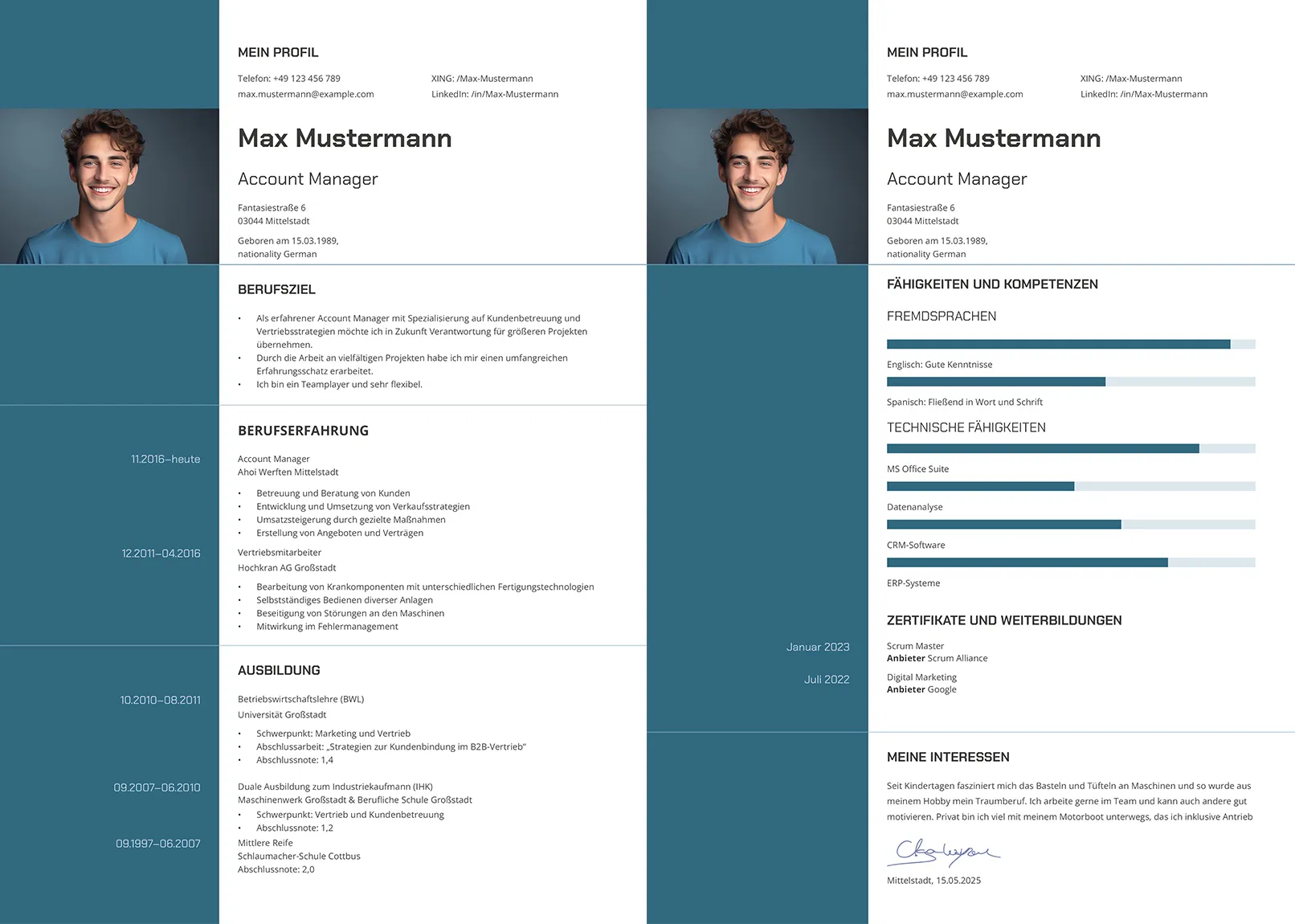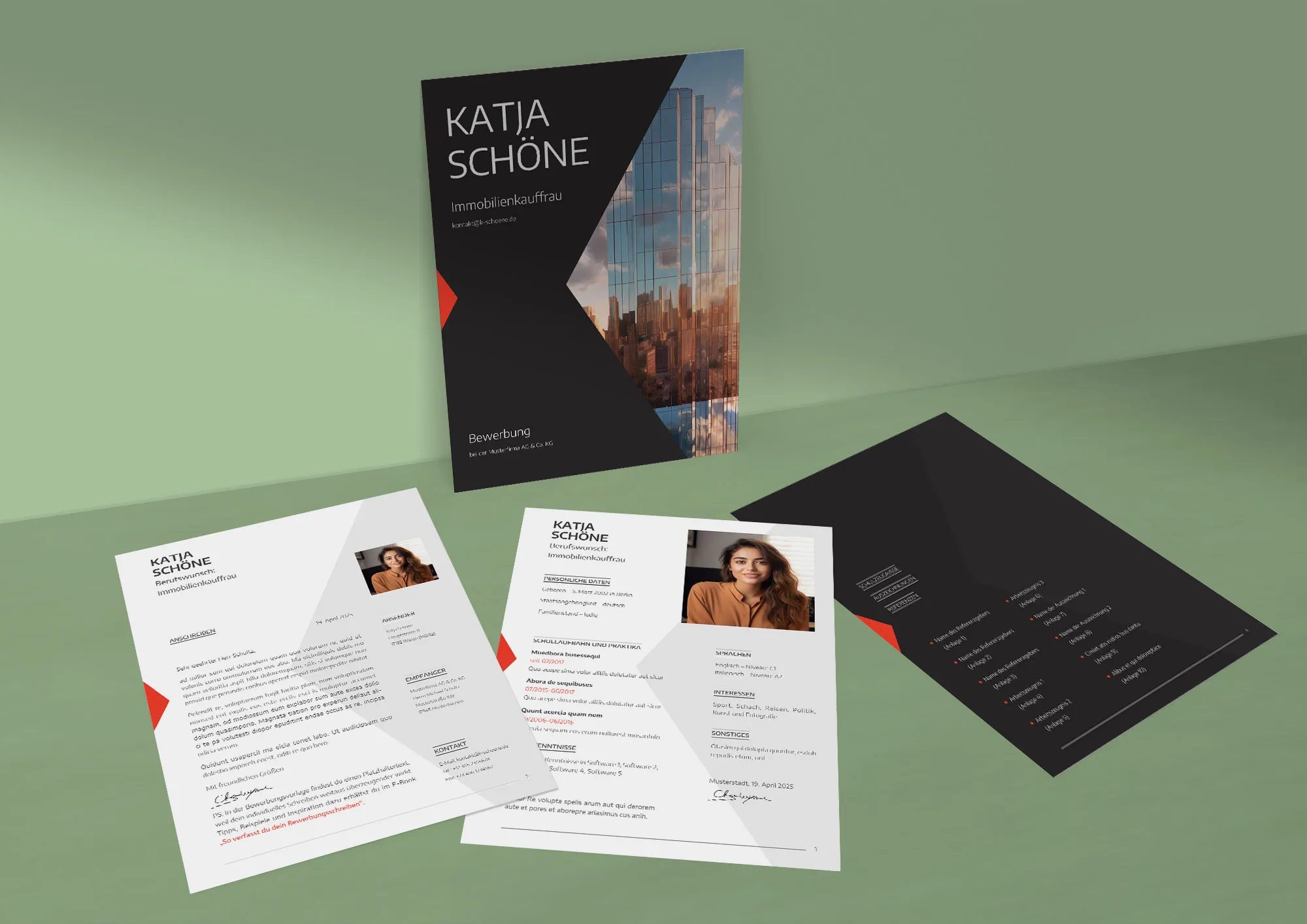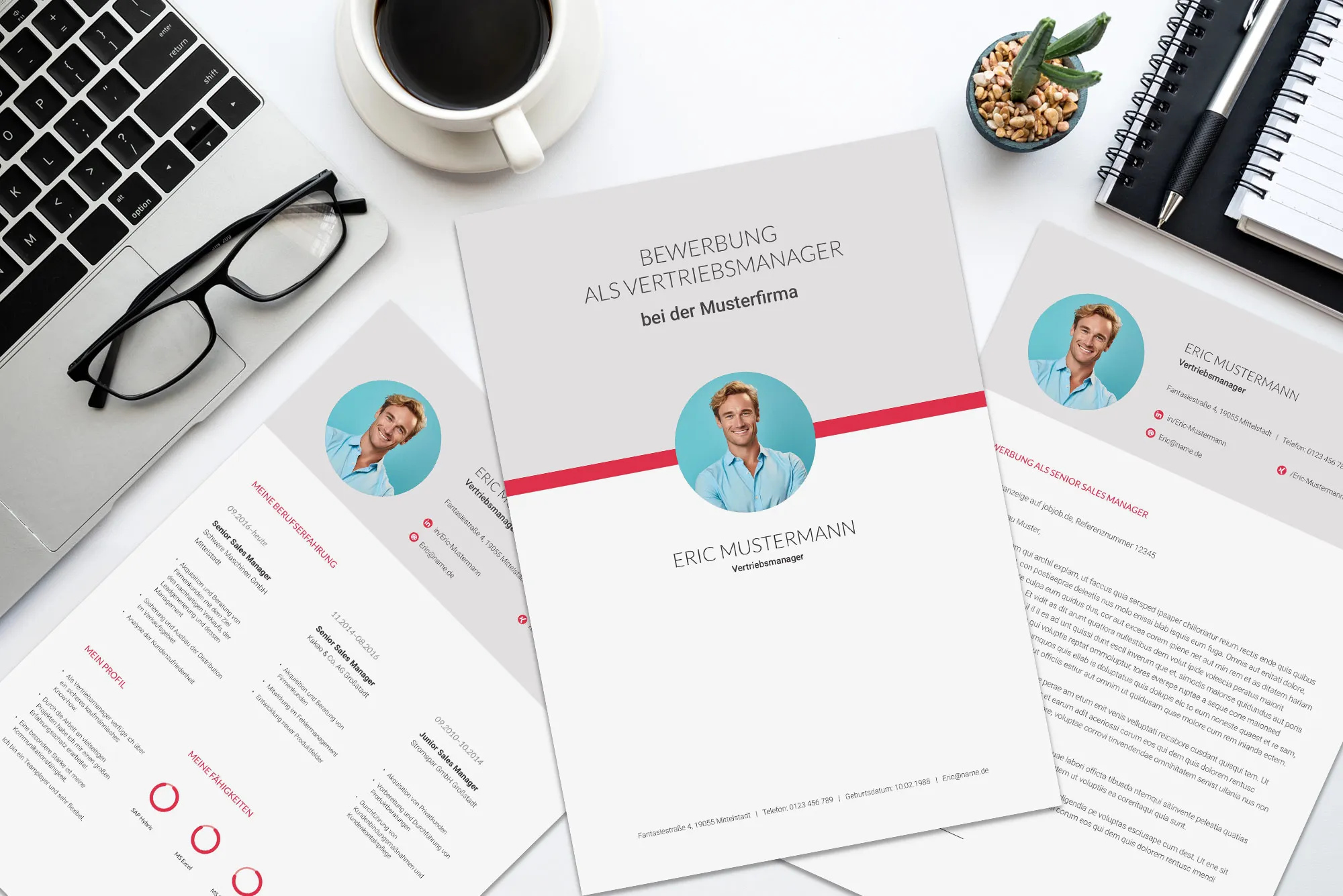Example of a CV: Basic elements, formats, useful tips
The job search requires professional skills for the new position, as well as the ability to present oneself correctly in order to even get the desired position. One of the most important documents in the application process is the resume. Well-structured, it is a kind of business card that conveys a complete picture of your professional achievements, experiences, and skills to the employer. A properly designed resume can not only attract the attention of the HR manager but also be a decisive factor for a positive decision on your application.

In this article, we will highlight the basic elements that a resume should contain to meet the standards of the job market. You will learn more about the different formats of this document and how to choose the one that best suits you. Additionally, we will provide useful tips to help you create an effective and professional resume. Finally, we offer a specific example of a resume for you to use as a reference and create your own unique document.
By paying attention to each of these aspects, you can increase your chances of successful employment and take a confident step towards your dream career.
Table of Contents
The Importance of a Well-Written Resume
A well-written resume plays a key role in the job application process. This document provides the employer with a complete overview of your professional history, skills, and past achievements. The resume not only reflects your qualifications but also shows how well-suited you are for a specific position.
The Role of the Resume in the Application Process
The resume is the central document that accompanies every application. It leaves the first impression on the candidate and often determines whether your application will be further considered and whether you will be invited for an interview. For employers, it is a quick way to assess whether you meet the requirements of the position and to recognize your professional background and potential.
Employer Requirements for Structure and Content
Most employers expect your resume to be clearly structured and as informative as possible. The basic requirements for the provided information include:
- Personal Information (Name, Contact Information)
- Work Experience (Company Names, Positions, Responsibilities, Achievements)
- Education (Names of Educational Institutions, Study Dates, Acquired Qualifications)
- Skills and Competencies (Professional Skills, Language Proficiency, Computer Skills)
- Additional Information (Certificates, Courses, Volunteer Activities)
- Hobbies and Interests (Social and Volunteer Activities, Leisure, Sporting Interests)
How a Well-Written Resume Can Highlight the Candidate
Practice has shown that a well-written resume attracts much more attention due to its structure and clarity. It enables the employer to quickly find the necessary information, significantly increasing the chances of receiving positive feedback. A successful resume highlights your accomplishments and key qualifications that match the position's requirements. This helps you stand out from other candidates, make a positive impression, and demonstrate your preparation and professionalism in the written application.

Get our high-quality resume templates now and increase your chances of landing your dream job!
Example resume: essential elements
There are various resume templates available. In general, all of these contain basic elements. These elements are crucial to leave a complete and professional impression and provide the employer with all the necessary information. The difference in the templates you find here on TutKit.com compared to other platforms is the modern design. The creators of our templates are design professionals who understand positioning and branding. They are the designers of the renowned agency 4eck Media. Comparing our templates to other websites, you will find that we do indeed offer the highest quality resumes and applications for download.
To create an effective resume, you need to understand which elements should be included and why they are important. Each section of this document has a unique function and helps the employer gain a complete picture of your professional qualifications and experiences.
Personal Information (Personal Details)
Personal information is the first section of any resume and contains basic information about the candidate. This includes name, date of birth, address, phone number, and email address. In some cases, you can also add a photo. This section allows the employer quick access to your contact details and helps identify you. Providing correct contact information ensures that the employer can easily reach you for scheduling an interview or clarifying details.
Modern Resume Designs offer a clear and structured presentation of your professional qualifications. They help highlight important information and direct the employer's attention to your strengths. Their appealing look leaves a professional and positive first impression. Additionally, they are often adaptable and easy to customize to specific job requirements.
Work Experience (Professional Experience)
Work experience is one of the most important sections of a resume. It includes the names of the companies where you have worked, your positions, responsibilities, and employment periods. It is important to mention achievements and results you have accomplished in previous jobs. This section shows the employer your career path and acquired skills. It gives an idea of how well suited you are for the advertised position. Emphasizing specific achievements and results helps you stand out from other candidates and demonstrates your competence and ability to achieve goals.
Education (Educational Background)
Education includes information about the educational institutions you have attended, qualifications obtained, specializations, and educational periods. Sometimes you can also add information about additional courses and certifications you acquired during your education. The educational background showcases your academic preparation and specialization. This is important for employers seeking candidates with specific theoretical knowledge and qualifications. Information about education helps assess the match of your academic background with the job requirements.
Skills and Competencies
In this section, you describe your professional and personal skills that may be useful for future work. These include language skills, proficiency in computer programs, communication skills, leadership qualities, etc. The section shows the employer your skills and ability to fulfill specific tasks. It is particularly important to emphasize those skills directly related to the desired position. This helps the employer understand how you can be beneficial to their company and what your strengths are.
Classic Resume Designs offer a timeless and professional appearance that is well received by many employers. They are simple and clearly designed, making important information easy to find. Their proven structure allows for a clear presentation of the career path and qualifications. Additionally, classic designs are versatile and suitable for most industries and positions.
Additional Information (Certificates and Courses)
Additional information includes all certificates and courses you have completed but are not included in the Education section. These can be professional training, online courses, seminars, and other forms of further education. The information listed here demonstrates your willingness for continuous learning and professional development. Having additional certificates and courses highlights your initiative and effort to improve your qualifications. This can be an additional advantage for the employer.
Hobbies and Interests
In this section, you can describe your hobbies and leisure activities. These can include sports, creative activities, volunteer work, or other activities. Although this section is optional, it helps the employer see you outside of the work process and evaluate you as a versatile personality. Information about hobbies and interests can showcase your personal qualities such as teamwork, leadership skills, or creative thinking. This can also help find common topics during the interview.
Sample Resume: Various Formats and Their Benefits
There are several formats for creating a resume, each with its own benefits and suitable for different situations. Choosing the right format can have a significant impact on how your application is perceived by an employer. Let's look at the three main resume formats—chronological, functional, and combined—and their advantages.
Chronological Resume
In the chronological format, information about work experience and education is presented in reverse chronological order, starting with the most recent job or educational attainment. The benefits of this format are:
- Structure: This format provides a clear overview of your career path and allows for easy tracking of the development of your professional skills.
- Transparency: The employer can quickly see your latest achievements and experiences, which is important for evaluating suitability for the current position.
- Popularity: The chronological resume is the most widely used and highly expected by employers, making it understandable and convenient for assessment.

Functional Resume
In the functional format, the focus is on skills and competencies rather than on the chronological order of employment. Here, the emphasis is on your professional skills and achievements in different areas. The advantages of this format are:
- Highlighting of Skills: This format allows you to highlight key qualifications and successes, which is particularly useful for candidates with diverse experiences or those looking to change fields.
- Flexibility: The functional resume is suitable for individuals with gaps in their work history or extensive experience in different areas, as it does not focus on dates.
- Focus on Achievements: This format allows you to focus on what you have accomplished in your career, rather than just the positions you have held.
Combined Resume
The combined resume combines elements of the chronological and functional formats. It includes a chronological listing of work experience and education, as well as sections on skills and achievements. The main advantages of this format are:
- Balance: The combined resume offers the best of both worlds – the structure of the chronological format and the focus on skills of the functional format.
- Completeness: This format allows you to present a complete picture of your professional skills and experiences, which can be very attractive to employers.
- Customization: It allows you to tailor the resume to a specific position by highlighting the key aspects of your career.
Choosing the right format for your resume is an important step towards a successful job search. Each of the formats – chronological, functional, and combined – has its own advantages and is suitable for different situations and types of experience. It is important to properly assess your professional achievements, skills, and career goals in order to choose the format that best highlights your strengths and meets the requirements of potential employers.
Example of a Resume on the TutKit.com Portal
All our templates sold on the TutKit.com portal can be downloaded in three formats: Microsoft Word, Adobe InDesign, and Serif Affinity Publisher. These formats are great for professionally editing templates. The easiest way to do this is in Microsoft Word or Google Docs. After editing, you should save the template in PDF format, as this is the preferred format for sending applications via email.
Sending your application in PDF format offers several advantages:
- Consistent Presentation: PDF documents look the same on any device, ensuring that your resume arrives as you created it.
- Compatibility: PDFs can be easily opened on most computers, tablets, and smartphones, regardless of the operating system used.
- Security: PDF files can be protected from unauthorized editing, ensuring that your original document remains unchanged.
- Professional Impression: An application in PDF format appears more professional and conveys to the employer that you are familiar with common standards.

Conclusion and Recommendations for Your Application
Remember, a resume is a tool that demonstrates your ability to meet the employer's requirements. Update your resume regularly, tailor it to specific job offers, and highlight your strongest information. This will help you stay ahead of the competition and achieve the success you desire in your career.
To further assist you, you can download our free templates, which will save you time and effort in creating your application. On our TutKit.com portal, you will also find a wide selection of application templates. These were created by the renowned design studio 4eck Media, as mentioned above, and meet all requirements and standards to make your application unique and stand out from other candidates.
From Vitalii Shynakov
